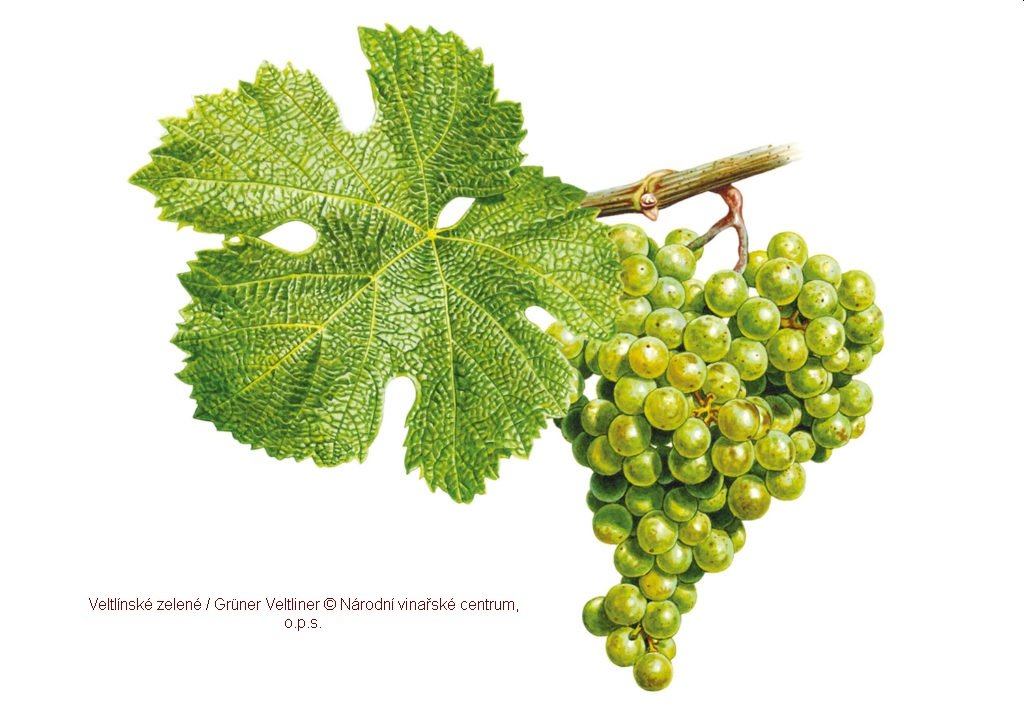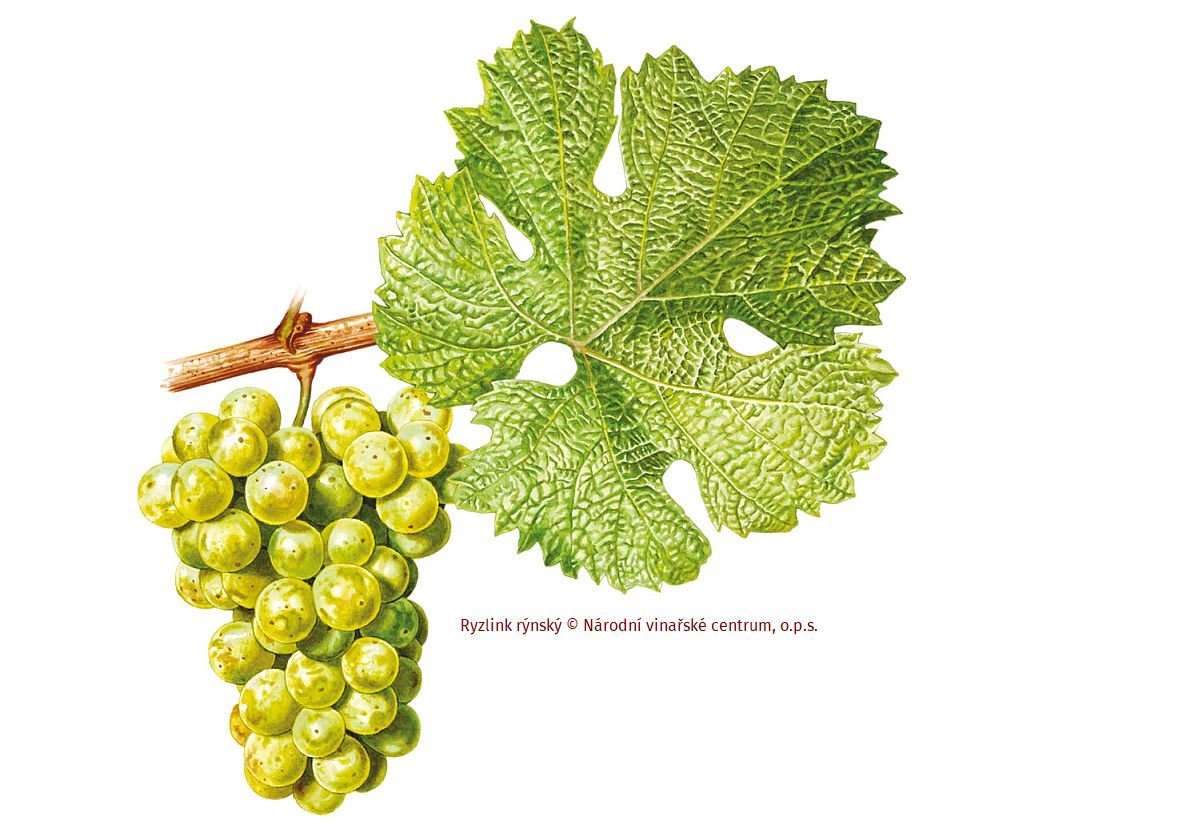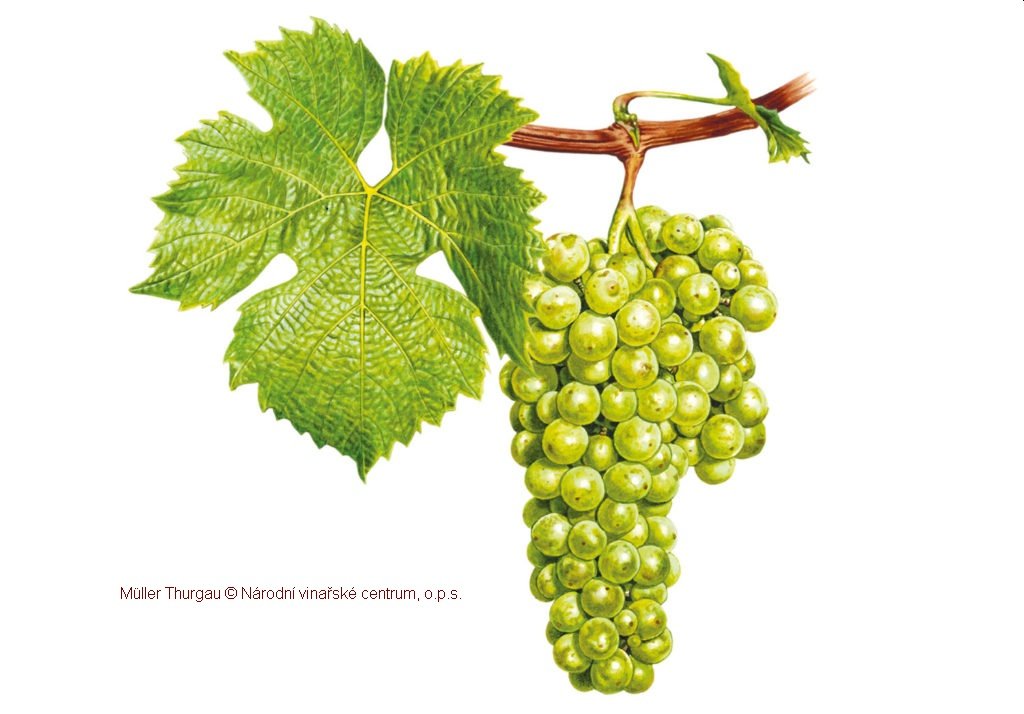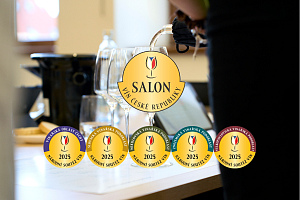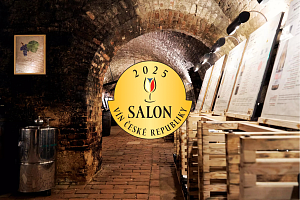Wines from the Riesling grape excel with their wide range of fragrances, from fruity to spicy, mineral, earthy and even smoky – depending on the type of soil and vintage. Most often, you will come across ripe apricots, linden flowers and quince flavours, which with age will mature to acquire a hint of petroleum. Wines with a greenish-straw hue when young gradually change colour to display deep golden tinges through maturing, while those with a special selection of berries take on shades of amber. Wines are distinguished by their high quality and their unrivalled status to accompany cold starters, trout as well as other fish, light poultry dishes, while the sweeter and more luscious versions are a good match for desserts.
Müller-Thurgau is the second-most planted grape variety in our vineyards. Its name derives from the combination of the surname of its breeder, Professor Hermann Müller and the name of the Swiss canton of Thurgau, where he came from. The wines are blessed with a light colour, having greenish-straw shades and are medium to full-bodied, lively and nicely balanced. On the nose and palate, one can find the scent of muscat with tones of nettle and peach, then citrus fruits, gooseberry and blackcurrants. It goes well with starters, vegetable soups, fish and fresh cheeses.
Welschriesling/Ryzlink vlašský
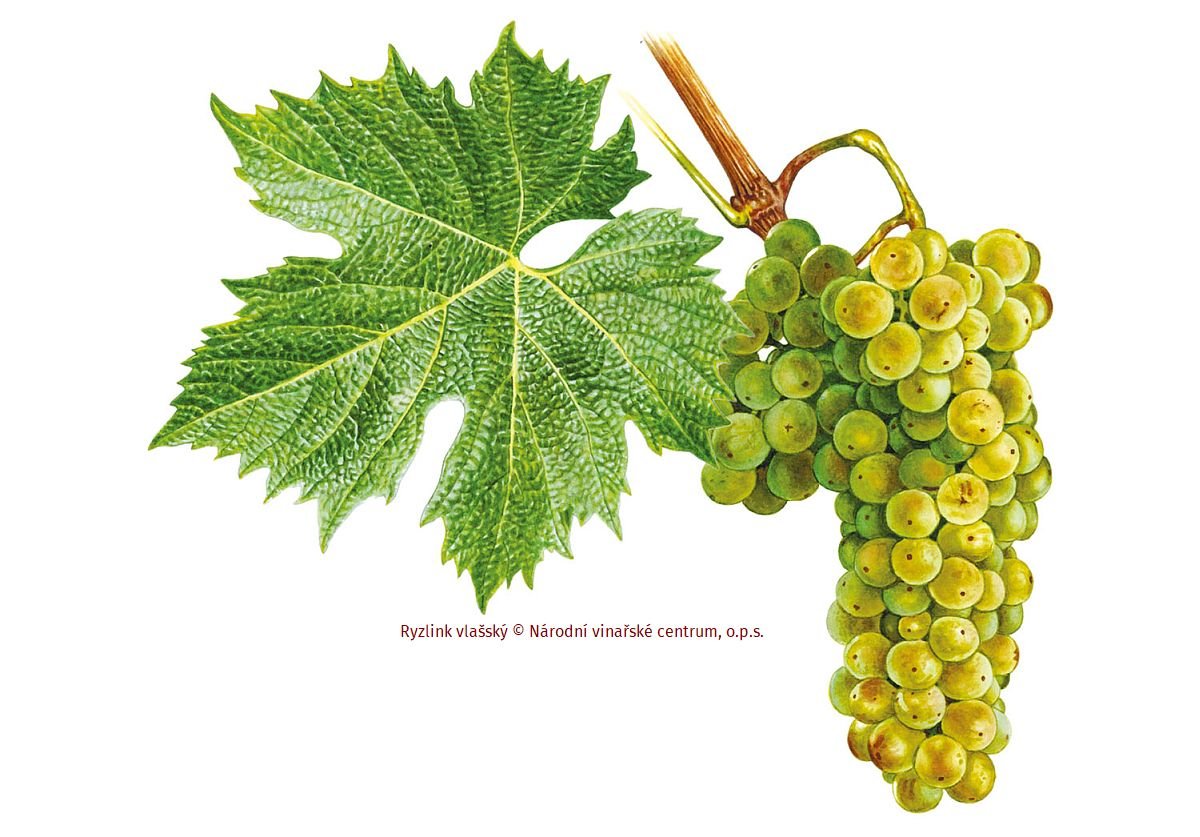
Welschriesling gives pleasingly fresh wines which are full and well-balanced on the palate. In younger wines with a straw-green colour, one will find a wide variety of flavours ranging from fruity currants or gooseberry, through to scents of meadow flowers reaching up to delicate honeyed notes with a hint of raisins and sultanas in mature styles. This grape often forms the base for sparkling wines and is also well suited to cellaring. Wines from Welschriesling go perfectly well with cold starters, vegetable dishes, mature cheeses, light fish dishes, but also excel with an assortment of freshly made pork products.
Year of entry in the National Register of Grape Varieties: 1941 | Origin: not certain, perhaps France or Italy | Current area in the Czech Republic: 1,081 ha (6,2 %)
Pinot Gris/Rulandské šedé
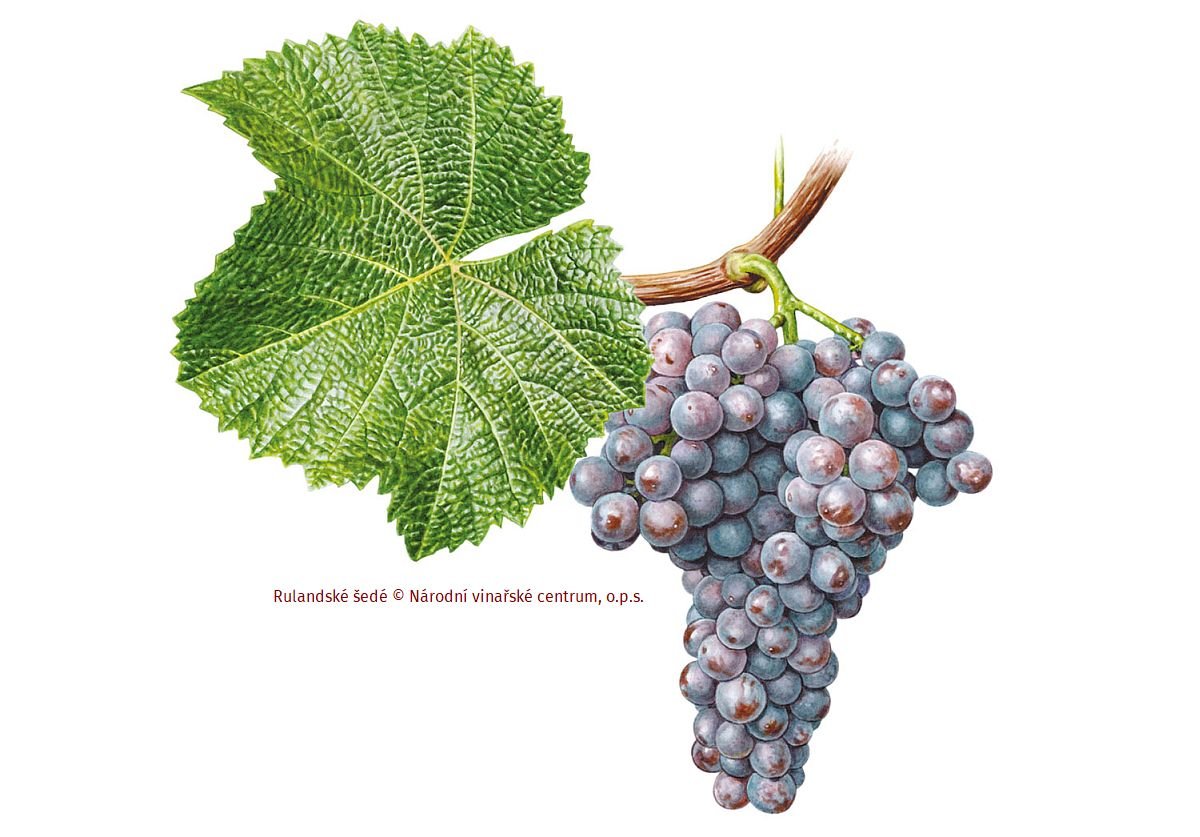
You can expect wines from this very old grape variety to have the characteristic aromas of red orange and honey, while the palate is full-bodied with ample, smooth flavours. The wines are golden-yellow in hue and typified by their glycerol content and alcohol, as well as their characteristic long-lasting aftertaste. In the wines, we can also find aromas of mango, pear, spices and botrytis tones as well as a typical hint of breadiness. Wonderful combinations can be had with rich and spicy dishes, while the sweeter wines are perfect with desserts.
Year of entry in the National Register of Grape Varieties: 1941 | Origin: France, Pinot Noir bud mutation | Current area in the Czech Republic: 1,046 ha (6,0 %)
Chardonnay
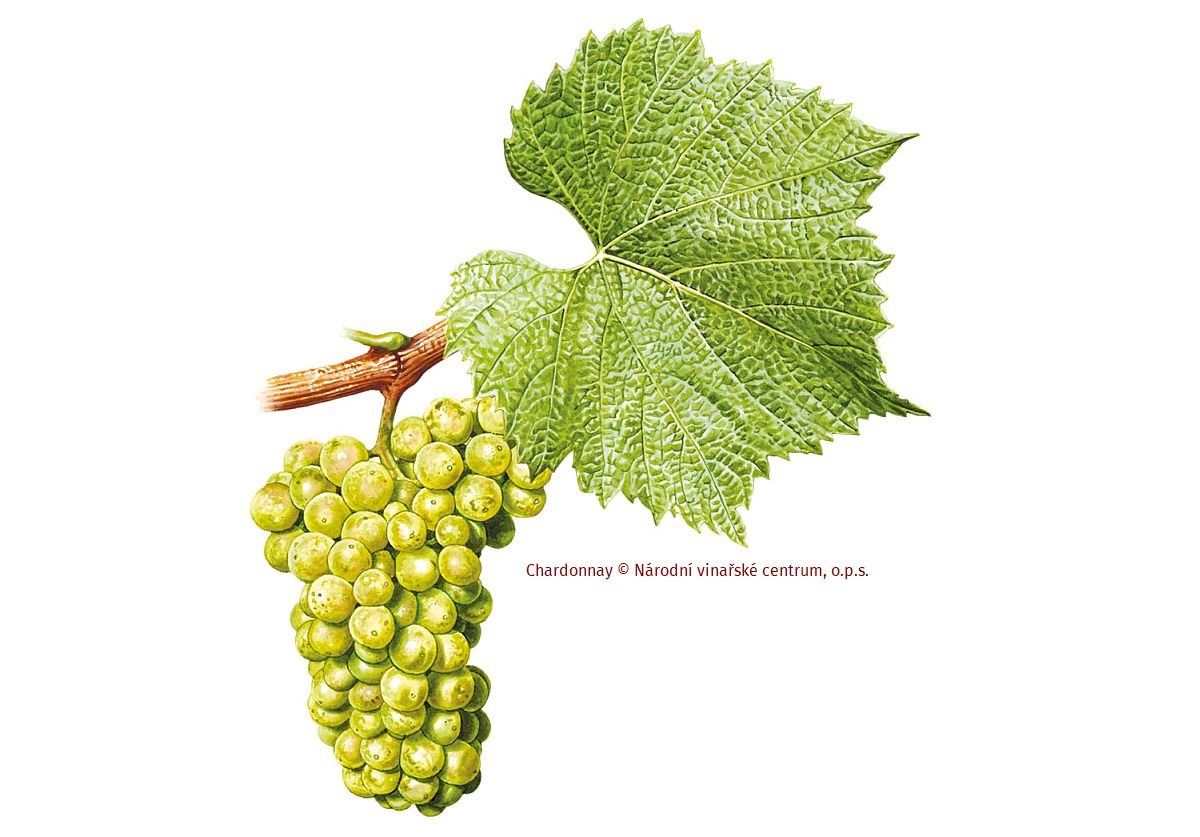
Wines of the Chardonnay variety are remarkable for their full and long-lastingpalate. However, the specific manifestation of these light-green to golden-coloured wines alters according to the varied climatic and soil conditions. In cooler climes, the wines are characterised by their crisp acidity with tones of green apple and acacia flowers, while in warmer zones they take on a more tropical character with the flavours of mango, cream and occasionally even ranging to honey and caramel. They are finely suited to festive occasions and go well with hearty soups, white-meat dishes and cream sauces. They also match perfectly with paté and seafood.
Year of entry in the National Register of Grape Varieties: 1987 | Origin: This native variety of France probably originated from a chance crossing of the variety Heunisch white with a variant from the Pinot group | Current area in the Czech Republic: 982 ha (5,7 %)
Sauvignon Blanc/Sauvignon
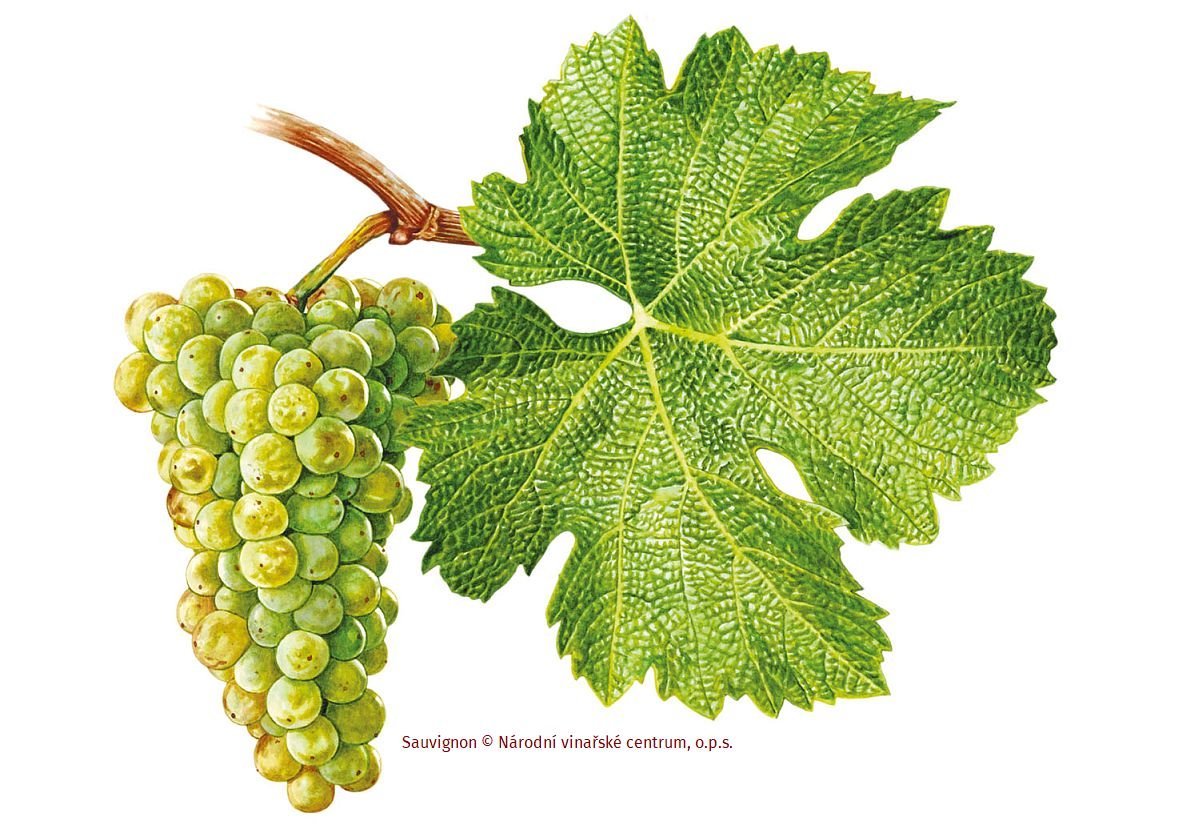
Sauvignon Blanc rates amongst the highest quality wines from northern wine regions. They are a light straw-green, intensely aromatic and spicy, with a zesty acidity. They catch one’s attention with their great range of fragrances, from grass and nettles to shades of orchard fruit. On both the nose and palate, we find blackcurrant, gooseberry, kiwi fruit and peach in the drier styles, while in the sweeter versions, there is pineapple, honey, mango, passion fruit and also acacia and orange blossom. Aromatically expressive and dry Sauvignons are well suited to serve as an aperitif, while the more mature examples are best matched with asparagus specialities, fish and goat’s cheese.
Year of entry in the National Register of Grape Varieties: 1952 | Origin: France (Loire Valley), probably a random crossing of Chenin blanc × Traminer | Current area in the Czech Republic: 907 ha (5,2 %)
Pálava
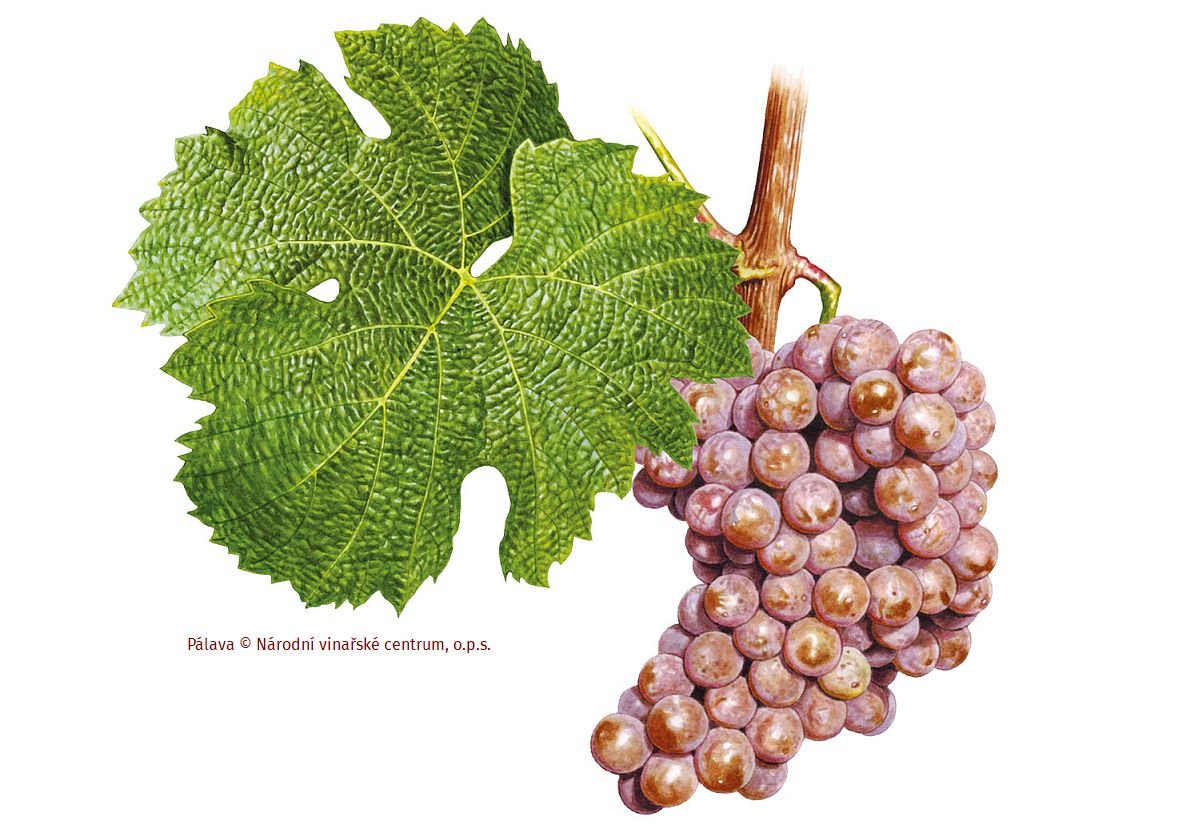
Wines from this uniquely Moravian variety are rather similar in character to the Traminer cultivars, being aromatic, though distinctly spicier. Their refined harmony also makes them more attractive for many consumers. They are full-bodied, with lower acidity and a long finish. They boast a golden-yellow colour and on the nose as well as the palate,we find lychee, mandarin and exotic spices such as nutmeg and vanilla. They pair brilliantly with spicy dishes, paté, roasted poultry, smoked or soft-rind cheeses and desserts.
Year of entry in the National Register of Grape Varieties: 1977 | Origin: Morava Wine region, crossing of Gewürztraminer × Müller Thurgau | Current area in the Czech Republic: 849 ha (4,9 %)
Gewürztraminer/Tramín červený
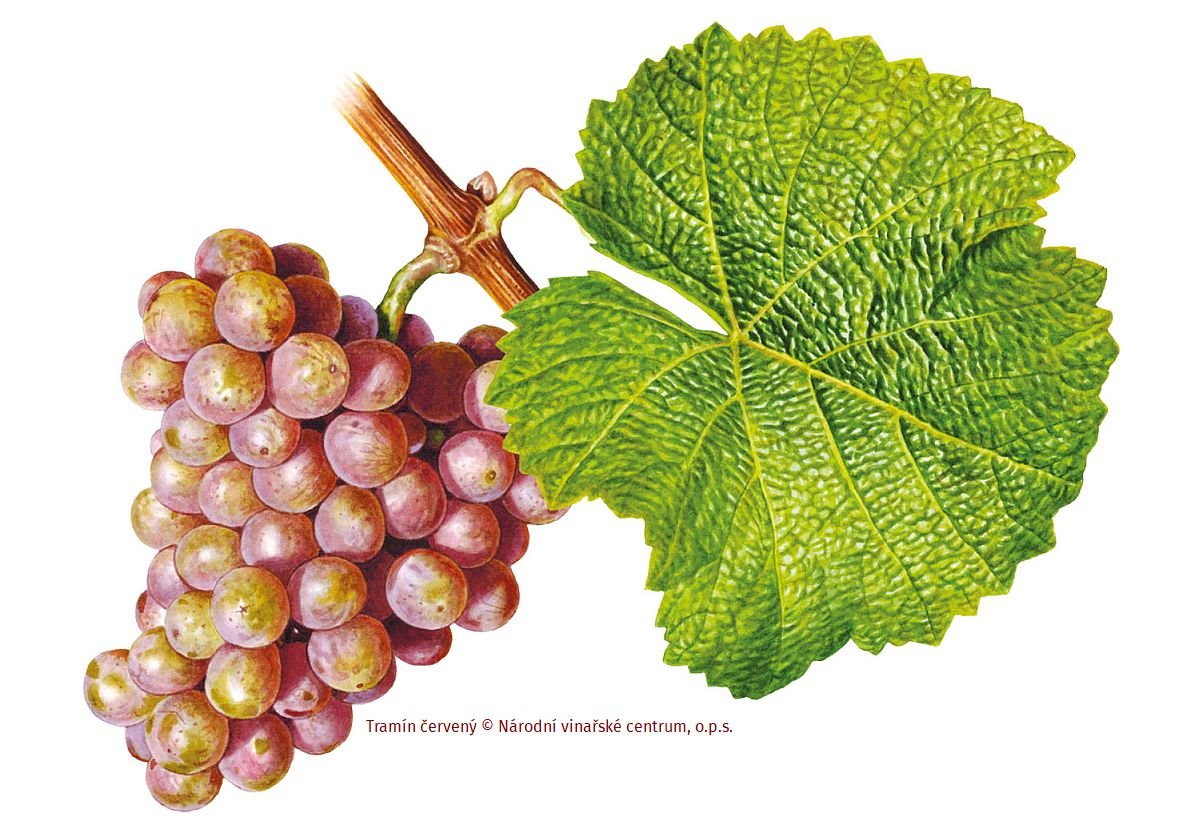
Wines from this ancient grape variety have a greenish-straw to golden-yellow colour and are characterised by their intense nose and spiciness, underlined with sweet honey and hints of dried fruit. The primary aroma can be compared to that of tea rose petals, and is accompanied by further nuances – fragrances such as tropical fruits, apricots, violets or peonies, as well as spiciness evoking ginger and cinammon. Wines from ripe grapes are full and opulent, with a concentrated viscous structure. They can be served as the aperitif for ceremonial occasions, or paired with either goose-liver paté or oriental dishes.
Year of entry in the National Register of Grape Varieties: 1941 | Origin: not known, probably Austria or South Tyrol, but it could also be Egypt | Current area in the Czech Republic: 791 ha (4,6 %)
Pinot blanc/Rulandské bílé
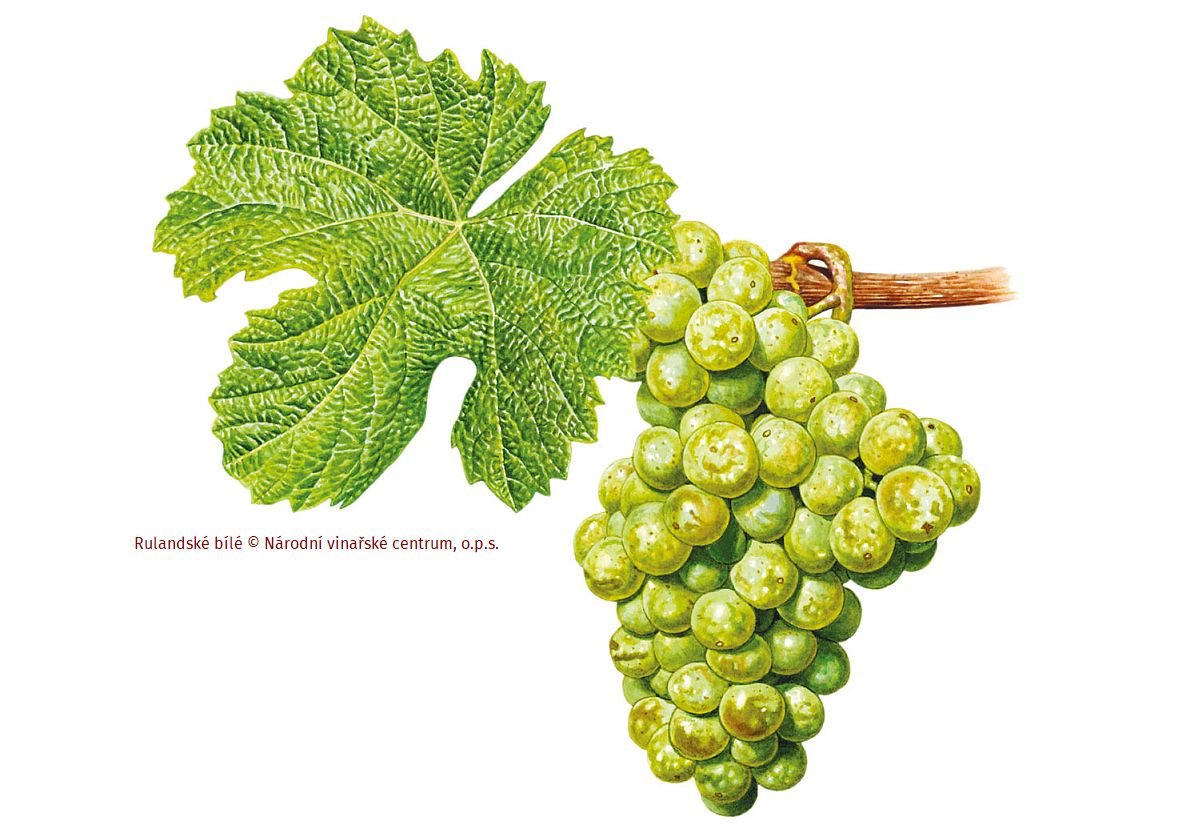
Pinot Blanc gives wines that are elegant, harmonious, full-bodied and rich. They have a greenish-yellow colour and a delicate floral scent. With maturation, their colour deepens and the original vivid aromatic expression becomes very distinctive and develops into one of ripe pears, red fruit and hazelnuts. This versatile variety is well-suited to the production of wines having a special selection of berries and even the noble qualities of botrytis, while also being ideal for sparkling wines. Pinot Blanc pairs brilliantly with smoked fish, chicken, light beef dishes, pork and mature cheeses.
Year of entry in the National Register of Grape Varieties: 1941 | Origin: France, Pinot Gris bud mutation | Current area in the Czech Republic: 739 ha (4,3 %)
MOPR/Moravian Muscat/Muškát moravský
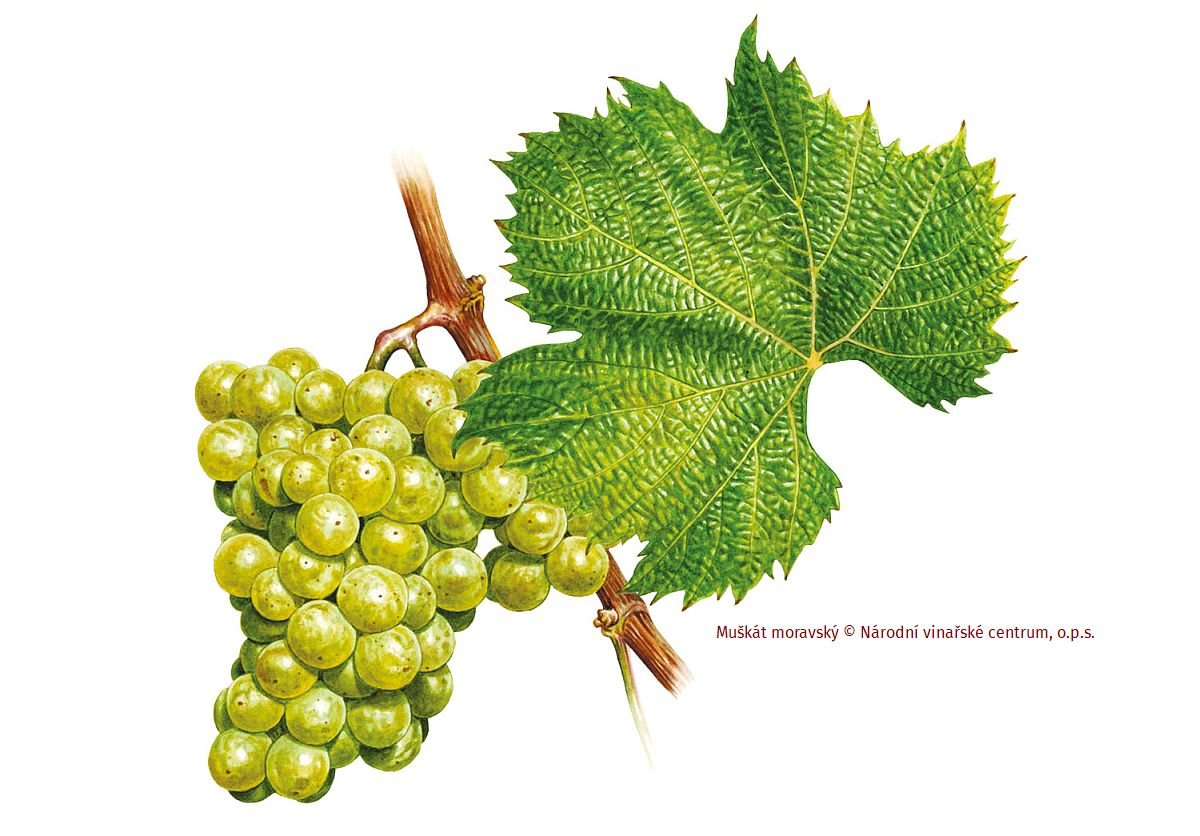
The quality wines from this variety, which was originally developed in Moravia, possess a highly muscaty nose and reflect more than any other variety the skill and experience of the winemaker. Delicately aromatic wines with fine acidity have a green-straw hue and the nose of tangerines and oranges so typical of muscat grapes. The dry wines from Moravian Muscat best serve as an aperitif, possibly in tandem with a delicate paté or asparagus, the semi-sweet ones combine beautifully with sweet desserts.
Year of entry in the National Register of Grape Varieties: 1987 | Origin: Morava Wine region, a crossing of Muscat Ottonel x Prachtraube | Current area in the Czech Republic: 444 ha (2,6 %)
Hibernal
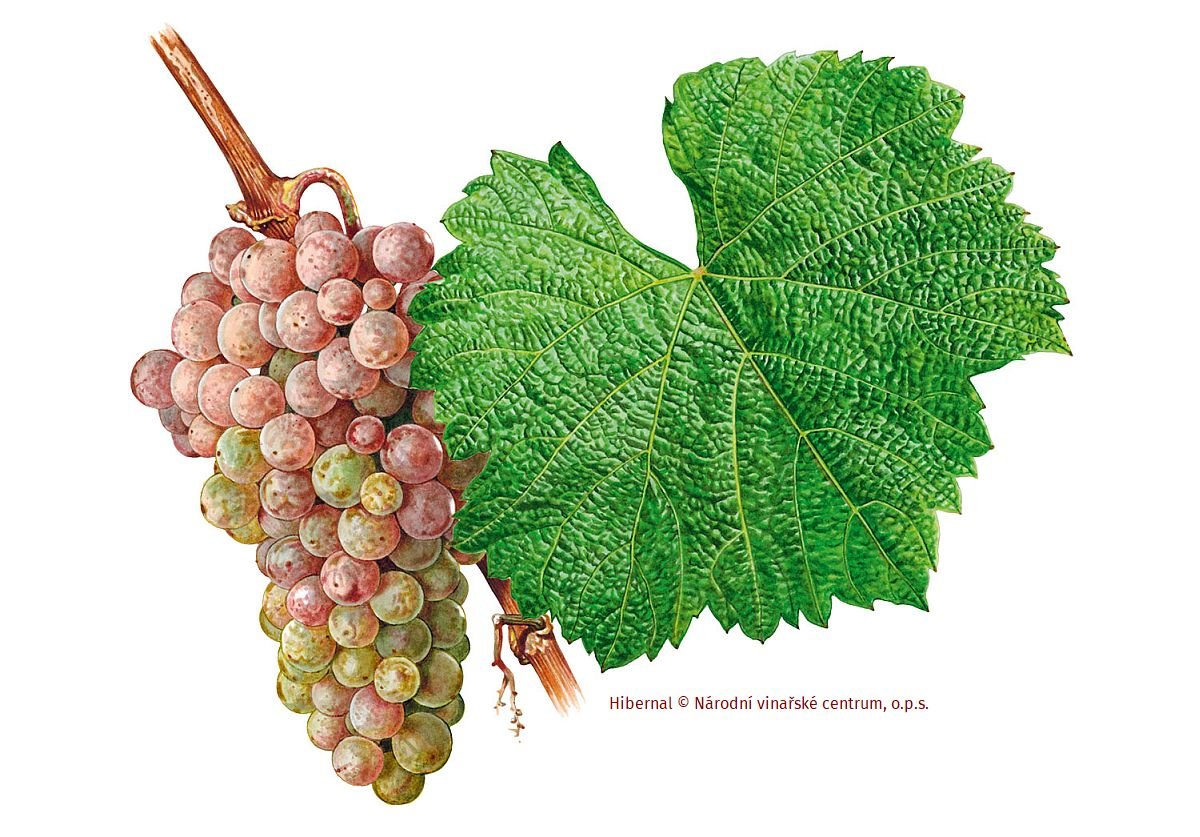
The wines display a greenish-yellow colour, a pronounced nose and a well-balanced palate. They owe their popularity to the distinctive aromas of peaches, blackcurrants, so very typical of Sauvignon Blanc, and also to the nose of linden flowers, apricots and other floral scents that are mostly characteristic of Riesling. The palate is rounded, spicy and harmonious. Hibernal can be happily paired with starters, asparagus, fish or seafood. The sweeter types are especially well-suited with desserts.
Year of entry in the National Register of Grape Varieties: 2004 | Origin: Germany, crossing (Seibel 7053 × Riesling clone 239 Gm) F2 generation | Current area in the Czech Republic: 426 ha (2,5 %)
Neuburger/Neuburské
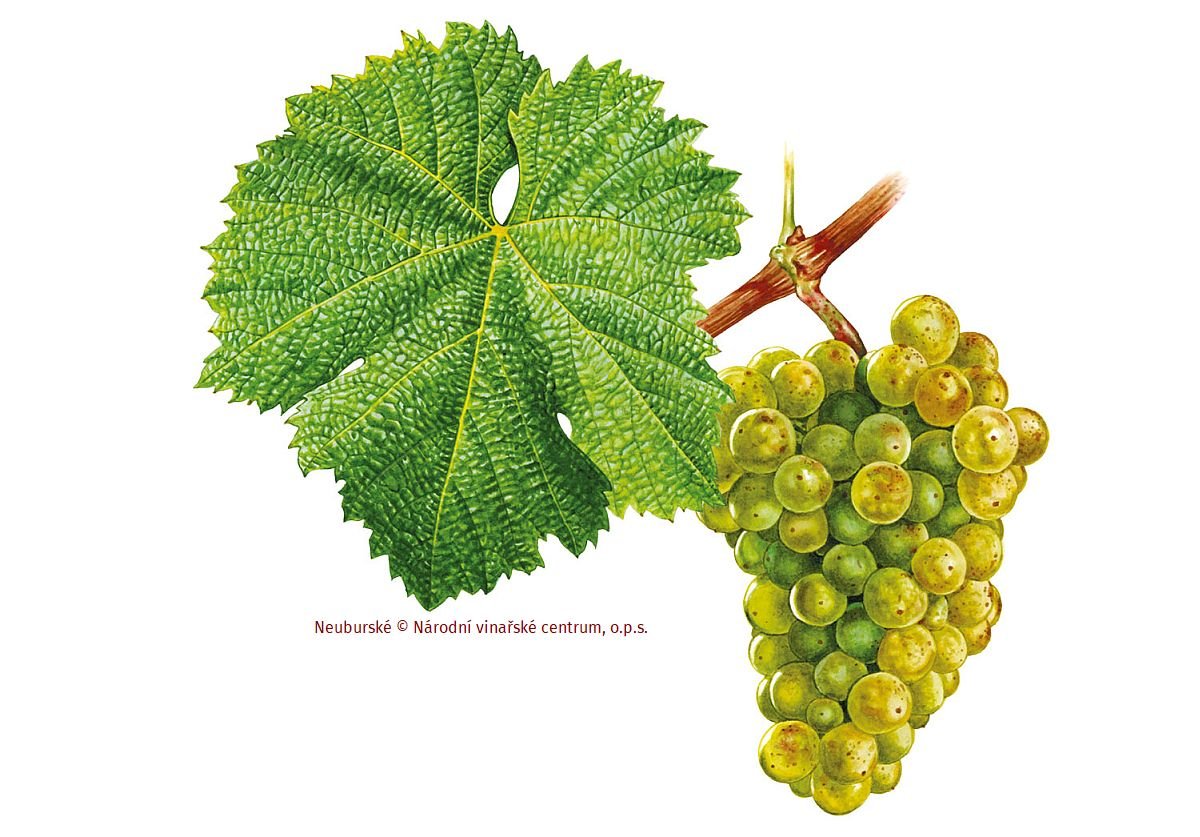
Neuburger gives finely fragrant wines with a palate that is full and well-balanced. The highest quality and the most interesting wines, with their straw to golden-yellow colour, are crfeated through prolonged bottle maturation. On the palate, they are opulent, medium-full to full-bodied, velvety and viscous. They have a floral-fruity character with an inimitable spicy, cinammon palate. On the nose as well as the palate, hints of walnut, raspberry and cream predominate. Neuburger pairs successfully with meat dishes in cream sauces, roast poultry and duck and goose-liver patés.
Year of entry in the National Register of Grape Varieties: 1941 | Origin: Austria, probably a crossing of Röter Veltliner × Grüner Sylvaner | Current area in the Czech Republic: 224 ha (1.3 %)
Grüner Silvaner/Sylvánské zelené
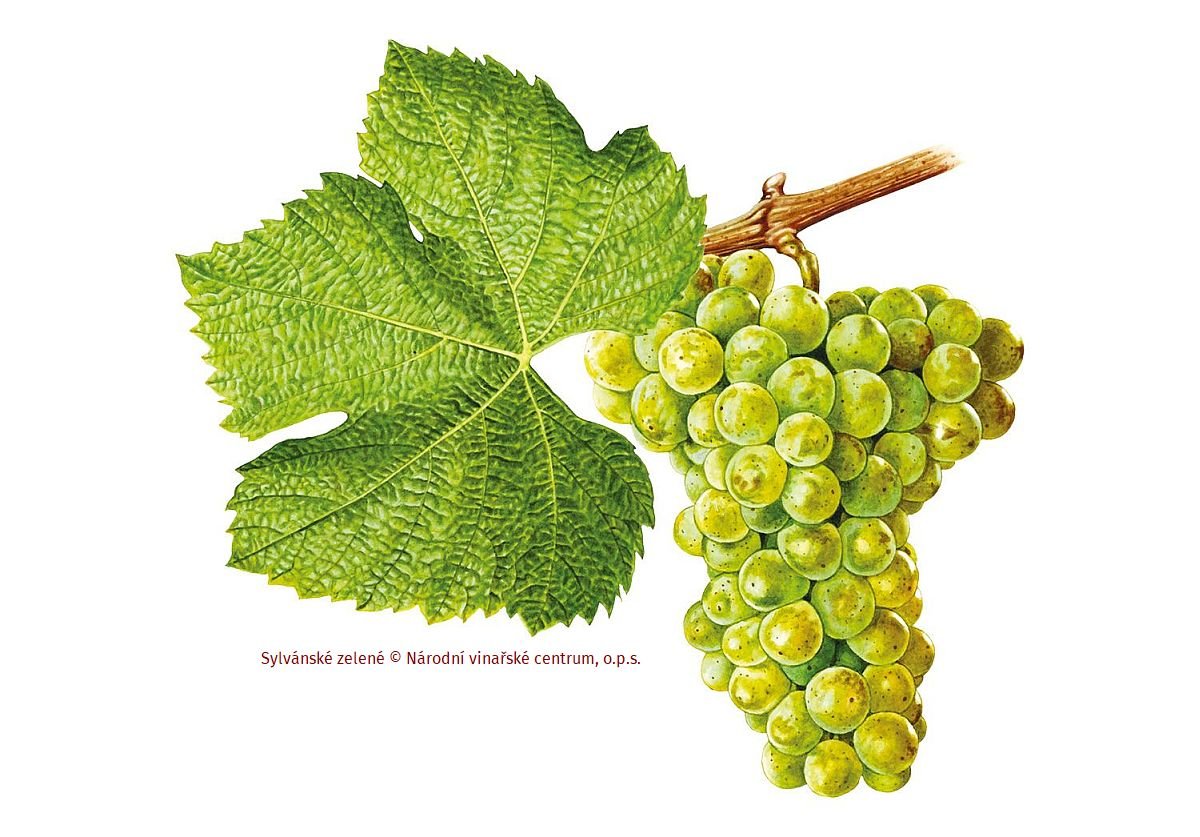
The Sylvaner grape variety ( known as Silvaner or Grüner Silvaner in German speaking countries) has a yellowy-golden hue and a zesty nose. The more youthful wines offer a hint of grassiness leading to gooseberry. In younger wines the palate is ample, round and lightly spiced with a distinctive acidity. When reaching greater ripeness, the grapes can give wines with special attributes which, when maturing in bottle, acquire an oily texture, smoothness and supple harmony, while on the nose one discovers acacia flowers as well as mineral and vegetal tones. The wines tend to be neutral, which means they do not interfere with the taste of delicate food, and marry well with dishes made using rabbit, poultry or pork, appetisers and cream sauces.
Year of entry in the National Register of Grape Varieties: 1941 | Origin: Austria, probably a crossing of Traminer × Österreichisch Weiss. One of the parents of Österreichisch Weiss was Heunisch Weiss. | Current area in the Czech Republic: 181 ha (1,1 %)
Malvasia/Veltlínské červené rané
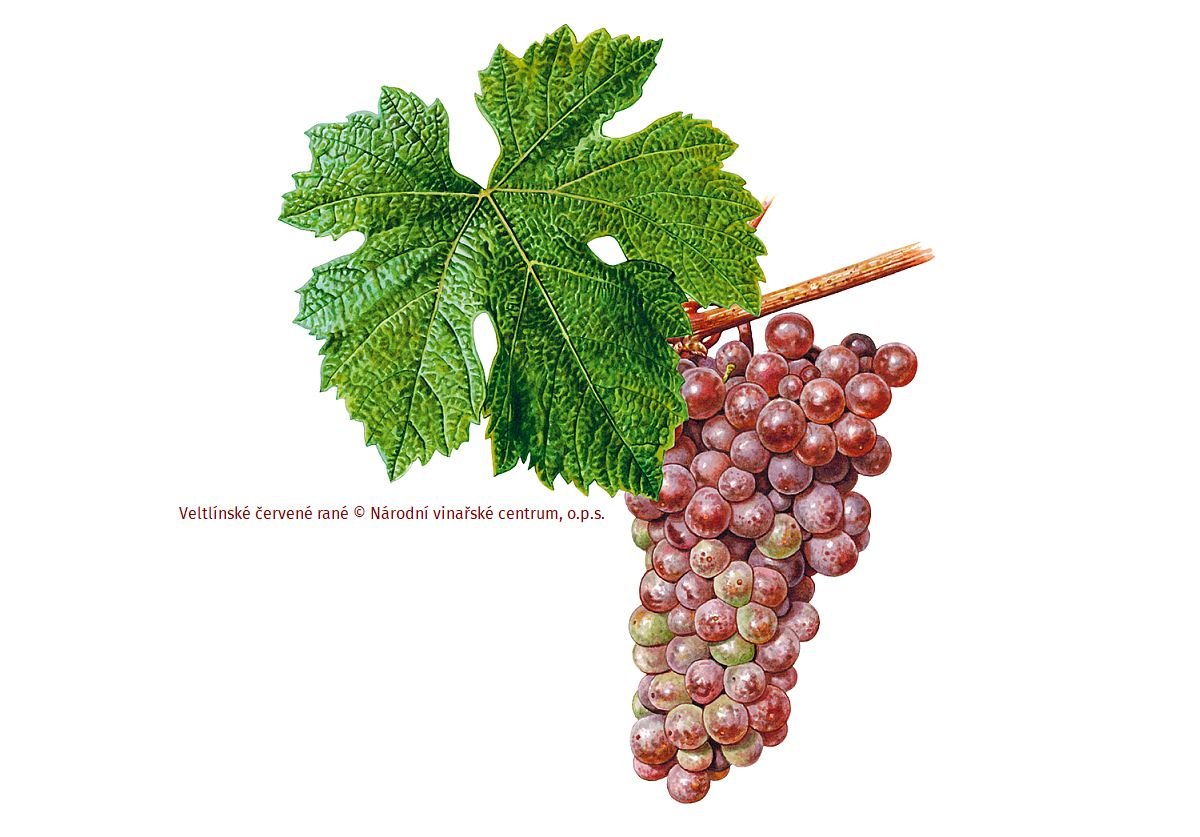
This early-ripening grape variety is characterised by its golden-yellow to gold colour. The nose is multi-layered and subtle, with hints of almonds, banana and elderflower. On the palate, the wine comes across as pleasingly fruity and we can discern a mixture of garden fruit, almonds and freshly baked bread. This grape has been designated as one of the three “white“ varieties permitted for the production of Saint Martin’s wine. It matches well with hearty soups, cold starters and poultry dishes.
Year of entry in the National Register of Grape Varieties: 1952 | Origin: Lower Austria, a random crossing of Grüner Sylvaner × Röter Veltliner | Current area in the Czech Republic: 115 ha (0,7 %)
Related
